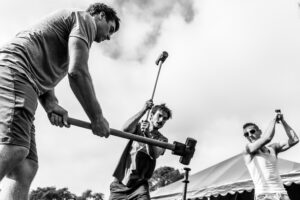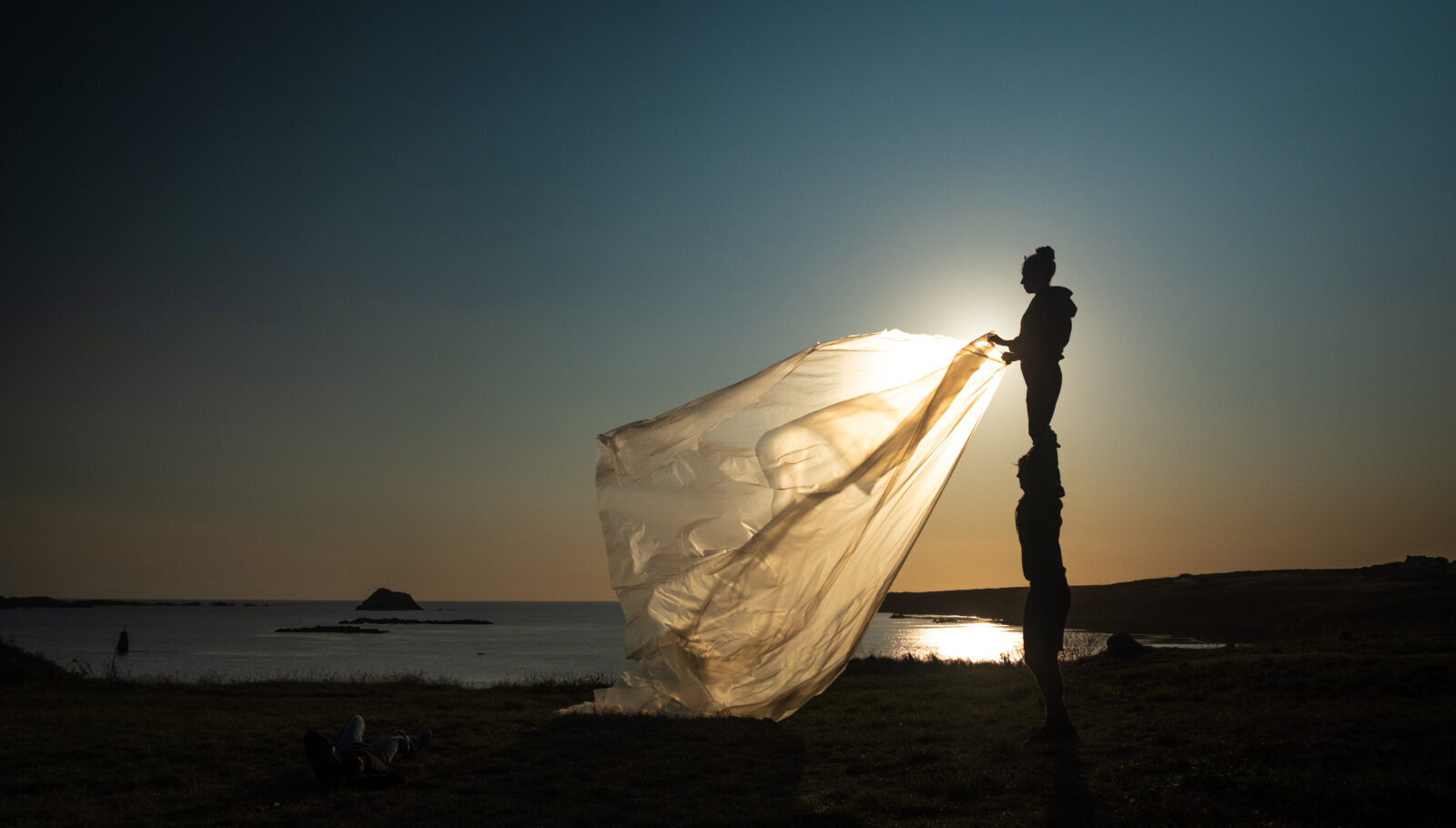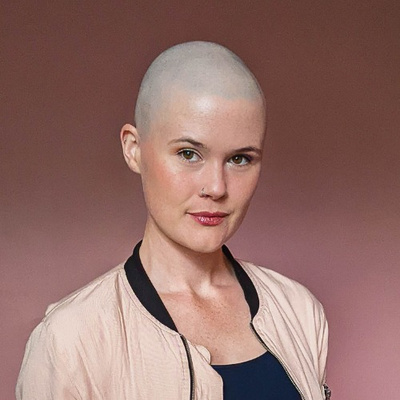Review: The Contemporary Circus Handbook
Modern Vaudeville Press’s new book The Contemporary Circus Handbook, written by Eric Bates and edited by Kim Campbell with Benjamin Domask-Ruh and Thom Wall, argues that not every circus artist has to learn how to build a show the hard way. Bates’ writing style is not only educational, but also encouraging. He understands the complexity of creating a successful contemporary circus show and acknowledges the lack of existing instruction for artists on the administrative side of show creation. In short, this approachable, succinct, and well-researched guide to collaborative creation should be mandatory reading for every new circus artist who thinks, “I’ve got an idea for a stage show.”
About the Book
After touring with 7 Fingers, performing with Cirque Éloize and Cirque du Soleil, and presenting an award-winning street show (among other impressive accolades), Eric Bates, along with his Cirque Barcode collaborators Alexandra Royer, Tristan Nielsen, and Eve Bigel, felt a desire to create a full-length, touring stage show. The problem? Circus performers are not always privy to the inner workings of funding, touring, and producing a show. As Bates explained it to me in an interview with him, “You really just see the tip of the iceberg in the creation room as an artist, and you don’t realize all the other stuff that’s happening behind the scenes.” So, Barcode had to learn how to do things the hard way. And after the difficult creation and production process for their first show, Sweat & Ink, Bates started to analyze the process of making a show more deeply. Barcode’s next production, Branché, would bring other creators into the mix, so they wanted to ensure the company had clear processes in place to respect their collaborators’ time and creativity as artists.
Bates’ new book, The Contemporary Circus Handbook, is the culmination of that analysis. It responds to the questions that his company didn’t have easy answers to; for instance:
- Do we need to be a company to tour a show?
- How do we convince someone to fund our creation process before the show itself exists?
- What do we do when the work stops being fun?
When the book’s publisher reached out to ask if I would be interested in writing a review of the book, I immediately agreed. I was hopeful that this handbook could demystify the nebulous creative process and give circus artists the tools they need to build a show. The book did not disappoint! If you are familiar with Modern Vaudeville Press’s catalog, then you will be happy to hear that The Contemporary Circus Handbook is a comprehensive guide to show creation in the same way that the publisher’s earlier book, Juggling: What It Is and How to Do It, was a comprehensive guide to the practice of juggling. Due to its wide coverage of the show creation process for emerging performing arts companies, Bates’ book is well-positioned to elevate the quantity and quality of full-length, touring circus productions in the coming years.
The Book’s Broad Reach

Modern Vaudeville Press editor Thom Wall, who has a Master’s degree in Nonprofit Arts Administration, told me that “the arts administration best practices you learn about in a degree-granting post-grad program—they are the same lessons that Eric is talking about in this book.” The Contemporary Circus Handbook is an accurate and valuable resource for a few important reasons. First, it draws on Bate’s own lived experiences—his trials and triumphs—as a member of a professional, touring circus arts company. Second, Bates bolstered his own experience with interviews and research into others’ experiences touring theater and circus worldwide. Lastly, Modern Vaudeville Press exclusively publishes books that focus on juggling, circus, vaudeville, and related fields and each book is reviewed by select peers in relevant fields. Wall is himself a professional circus artist and, as he told me in our interview, “We absolutely bring in experts every single time there is a question [related to the writing of a publication].” For The Contemporary Circus Handbook in particular, Wall said, “We ended up sending that to about 25 people in the beginning… not only in the circus world, but also the theater world.”
This also explains the book’s broad applicability across the performing arts. Although my own background is in the theater arts, I still found the book’s lessons resonant. In theater school, I learned how to write, direct, and perform innovative theater performances alongside like-minded collaborators. However, I didn’t learn how to deal with what came next: writing grant applications, the inevitable disagreements between collaborators, marketing my show, traveling with my show, etc. Impressively, Bates’ book teaches the basics of every part of the collective show creation process, including sections on creation, organization, funding, producing, and touring. “I think one of the big reflections I had upon finishing the book,” Bates told me, “was that it wasn’t just about making circus shows, it was about how to work well as a team, how to collaborate with people… And I actually made it a point to interview a few different directors that I’ve worked with that have done both dance and circus… This book can really apply to anyone making a circus show, a dance show, a physical theater show, really any sort of collaborative project.”
Because of the wide applicability of the book’s lessons, the title is already in many circus and theater school and company libraries, and even on a few course syllabi for the upcoming school year.
Lessons Covered in the Book
Arguably the most important idea in this book, which found its way into every chapter, was that no one makes a show alone. For most of us, Bates told me, “Our instinct is to try to do it ourselves. But you’re going to need a team eventually… unless you happen to also be a light designer, a sound designer, a, you know, a tax attorney.” In collective creation, which the book caters to, Bates writes on page 43 that, “What feels good, might not be what looks good from the outside.” In this case, a director, dramaturg, or “outside eye” can be a valuable resource. For collectives that need funding, but aren’t ready to incorporate yet, in the USA they can request help from a company that already has 501(c)(3) status for fiscal sponsorship while the show is being made (p. 118). And if asking for help seems intimidating, or a creator doesn’t know someone with the skills they require, Bates actually offers two full pages of tips for how to email strangers (p. 130). Bates reminds his reader that, although creators shouldn’t be afraid to admit what they don’t know, they also shouldn’t let that stop them from learning. “Sometimes,” he writes, “the only qualification you need is the assumption of responsibility” (p. 105).

Another major lesson from the book is that restrictions breed creativity and ultimately get results. “Something that surprised me,” Bates said in our interview, “was how often I would get similar responses from all these different creators from all around the world… A lot of them said what helped them was structure, which I thought was really interesting. And I would sum it up by saying: games need rules.” In a subsection on “The Deadly ‘Ors’,” Bates explains that you shouldn’t talk about ideas—you should try them. Saying “or we could do this!” over and over again will block your ability to progress (p. 71). Trying things out will quickly tell you what is worth pursuing and what is not, effectively reducing the many pathways your creation could go down. The next subsection, “It’s Easier to Fix Something Than to Make Something,” offers another way to set restrictions on the creative process (p. 72). Having something to discuss will always make the creative energy flow more easily.
“Without rules in a creation,” Bates writes in the book, “we might unknowingly play by the rules we’ve become accustomed to in our everyday life—the boring ones that make us not stand out or do anything different” (p. 58). Or, worse than boring, some of our unconscious, conventional decisions can actually perpetuate harm to others and our environments. With their show Branché, the restrictions Cirque Barcode placed on their creative process extended to their funding, producing, and touring decisions because they realized that “a lot of the environmental impact your show will have over its lifetime will be baked into the process during its conception” (p. 238). The restriction of creating a “sustainable circus” resulted in feeding the team via local sources who were throwing food out anyway, performing the show in forests, and not taking airplanes to perform the show. These are all creative solutions to common problems and they resulted from placing strict restrictions on the creation process.
In Conclusion
This book cannot answer every question you will have as you create a company or a show, nor is it trying to. Rather, it offers an overview of the entire show creation process—from devising material to finding an agent—along with a few specific, practical tools to get the reader started at any given point on their show’s journey. The book echoes teachings from degree-granting Arts programs, but also brings an interdisciplinarity to the topic of show creation that is not usually found in the Arts. This book is good for anyone looking to create and sell their own show from scratch, especially if they are doing it in a collective or company of other artists.
If you’d like to hear more from my interview with Eric Bates and the lessons I learned from this book, you can watch an accompanying YouTube video here.
...Do you have a story to share? Submit your news story, article or press release.






